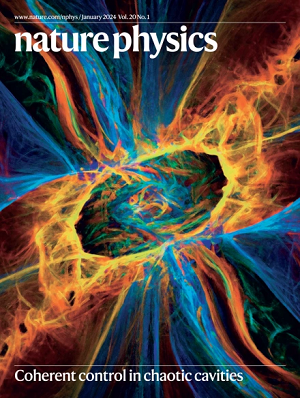Non-trivial quantum geometry and the strength of electron–phonon coupling
IF 18.4
1区 物理与天体物理
Q1 PHYSICS, MULTIDISCIPLINARY
引用次数: 0
Abstract
Electron–phonon coupling is crucial for the existence of various phases of matter, in particular superconductivity and density waves. Here, we devise a theory that incorporates the quantum geometry of the electron bands into the electron–phonon coupling, demonstrating the crucial contributions of the Fubini–Study metric or its orbital selective version to the dimensionless electron–phonon coupling constant. We apply the theory to two materials, that is, graphene and MgB2, where the geometric contributions account for approximately 50% and 90% of the total electron–phonon coupling constant, respectively. The quantum geometric contributions in the two systems are further bounded from below by topological contributions. Our results suggest that the non-trivial electron band geometry or topology might favour superconductivity with a relatively high critical temperature. Quantum geometry and electron–phonon coupling are two fundamental concepts in condensed matter physics that govern many correlated ground states. Now a generalized theory connects these two ideas.


非三维量子几何与电子-声子耦合强度
电子-声子耦合对于物质的各种阶段,特别是超导和密度波的存在至关重要。在这里,我们设计了一种将电子带的量子几何纳入电子-声子耦合的理论,证明了富比研究度量或其轨道选择版本对无量纲电子-声子耦合常数的重要贡献。我们将该理论应用于两种材料,即石墨烯和 MgB2,在这两种材料中,几何贡献分别约占电子-声子耦合常数总量的 50%和 90%。这两个系统中的量子几何贡献进一步受到拓扑贡献的约束。我们的结果表明,非三维电子带几何或拓扑可能有利于临界温度相对较高的超导性。
本文章由计算机程序翻译,如有差异,请以英文原文为准。
求助全文
约1分钟内获得全文
求助全文
来源期刊

Nature Physics
物理-物理:综合
CiteScore
30.40
自引率
2.00%
发文量
349
审稿时长
4-8 weeks
期刊介绍:
Nature Physics is dedicated to publishing top-tier original research in physics with a fair and rigorous review process. It provides high visibility and access to a broad readership, maintaining high standards in copy editing and production, ensuring rapid publication, and maintaining independence from academic societies and other vested interests.
The journal presents two main research paper formats: Letters and Articles. Alongside primary research, Nature Physics serves as a central source for valuable information within the physics community through Review Articles, News & Views, Research Highlights covering crucial developments across the physics literature, Commentaries, Book Reviews, and Correspondence.
 求助内容:
求助内容: 应助结果提醒方式:
应助结果提醒方式:


